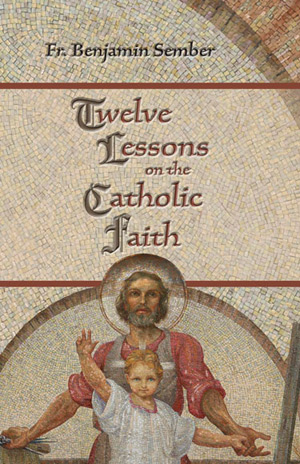
If we haven’t heard by now, we should take the time to learn: all things are connected. For example, in the American Church, studies from Catholic University paint a dismal picture — approximately 35 percent of professed Catholics surveyed don’t believe in the Real Presence of Christ in the Eucharist.
Before you sputter and stutter like I did, wondering what that even means for the faith, recall that 51 percent of Catholic voters voted for ideology directly in conflict with Church teaching! True, in one respect, the postmodern milieu around us — i.e. values are relative, secularization is on the rise, people ignore and marginalize the authority of the Church, and life is no more than a commodity — seduces some Catholics with its allure. Why is all this happening?
One word: catechesis.
Many of those Catholics who vote, those who make decisions, and those who shape the world today are the victims of a profoundly diluted catechesis. With good catechesis, American Catholics would believe in Christ’s commandments and cherish life. With good catechesis, a few more than 65 percent of American Catholics would understand and bear witness to the Real Presence of Christ in the Eucharist. With good catechesis, the whole world would hunger for the Good News.
Enter Fr. Benjamin Sember and a new book titled, “Twelve Lessons on the Catholic Faith.” I’ve always said, never underestimate an author’s use of a name and, in this same light, never ignore an author’s use of numbers: “Twelve Lessons,” 12 months in a year, 12 tribes of Israel, 12 Apostles, 12 pancakes in a dozen, and 12 people in a hockey brawl. Fr. Sember presents 12 lessons that tie the essence of the Catholic faith together into one palatable bundle, and in our “I-don’t-have-much-time-to-spend-on-my-faith” lives, this is a good thing, especially considering the length of the actual catechism itself. Of course, everyone should read the full catechism routinely, but here is a reasonable or, at least, a beginning alternative.
The first thing that strikes us when we begin to read this book is the language and the content. The language is decidedly directed toward children, and the content extends to examples beyond what is normally taught so that children can understand the teachings in reality; but before any of you throw up your hands and say, “this ain’t for me,” consider this: “Amen, I say to you, unless you turn and become like children, you will not enter the kingdom of heaven.” (Mt. 18:3) And consider this: the days of simply dropping the kids off at RE and going shopping are at an end. It didn’t work and our faith is now at stake.
Parents are the primary teachers of the faith and they need to live it for the children’s sake. As adult members of the faith, they must also act as witnesses to the Good News, as the old saying goes: “Use it or lose it.” Fr. Sember’s book is one of those that will help on both accounts. His book contains lessons on creation, the covenant, the Trinity, the Church itself in relationship to God, the sacraments, doing good, prayer, Mary and the saints, angels, and salvation, stuff any student of theology would get into but with a slightly less-elevated tone.
One interesting aspect of his book is that he takes those teachings and expands them further into everyday life, mostly so that younger people will relate better to the content. We all know, for example, that among all the other things, God created the animals, but Fr. Sember likes the biology lesson: “Then God made birds to fill the sky. He made tiny hummingbirds, and hawks and eagles and penguins.” Children relate more to the individual animal species — many are on morning cartoons — than they relate simply to “animals.” Besides, dual-purpose education or pedagogical multi-tasking is perfectly acceptable in any environment.
What lessons would be complete without discussion questions? The only problem is that Fr. Sember includes the answer directly after each question. Has he never heard of academic rigor?
While being faithful to Church teaching, Fr. Sember does run the risk of controversy in his discussion on the sacrament of marriage. Four times he refers to a “man” and “woman” and a “husband” and “wife.” No confusion on the definition. I wish Fr. Sember would have highlighted the “procreative” aspect of the marital sacrament.
This book is solid, fits in with our unnecessarily frenetic lives and unabashedly holds Catholic teaching up to the light. Published locally by Tau Publishing.






